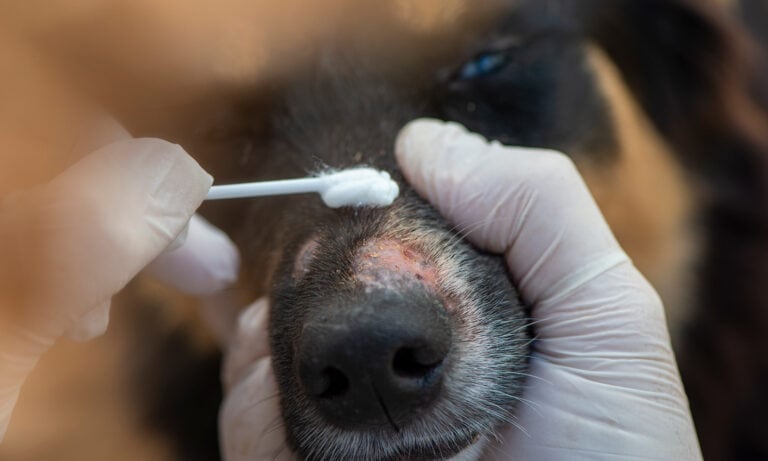Did you know that next to the skin, the liver is the second largest organ in your dog’s body? A healthy liver is critical to your dog’s health. However, because the liver still can function normally even with 70 percent of it diseased or damaged, the early signs of liver failure in dogs often go missed. Unfortunately in my clinical experience, a lot of dogs with liver failure aren’t taken to the veterinarian until it is too late.
By learning to pay attention to the subtle signs of liver disease in dogs, and by having your dog checked annually by a veterinarian, you can spot symptoms that might be early signs of liver disease, potentially save your dog’s life and prevent further damage with early intervention.
The most challenging part of noticing early signs of liver failure in dogs is that they do not point directly to the liver. The liver does many things. Some of its jobs include making proteins, detoxifying the blood, making clotting factors, storing multiple vitamins and minerals and aiding digestion, which is why the early signs often are missed, ignored or attributed to other causes.
Common Signs of Dog Liver Disease
Physical Signs
One of the most common signs with early dog liver disease is problems with the digestive tract. A malfunctioning liver can make a dog feel nauseous and vomit or stop eating, or it can contribute to diarrhea. If your dog is losing weight and you didn’t put him on a diet, then that is another clue that something might not be right under the hood. Liver dysfunction also can cause a dog to feel thirsty, even though excessive urinating and drinking commonly are associated with kidney disease or diabetes.
Not all signs of liver disease are on the inside of your dog. One of the liver’s biggest jobs is to make proteins, and the biggest protein consumers in the body are the skin and hair. If the body senses that the liver isn’t keeping up with the protein demand, then the body will selectively shift all the proteins being made to the vital organs — gut, heart and brain — and give less to the skin and hair. This can result in abnormal looking skin and hair. You might notice hair that grows slow or fails to regrow after the dog is shaved, brittle hair, dandruff or hair loss if there is a problem with the liver.
Behavioral Signs
Liver disease in dogs may cause behavioral changes, such as lethargy, irritability or depression. Even though those behavioral changes can be due to chronic pain from arthritis, doggy dementia or hormonal disorders, it also can be caused by liver disease.
Puppies can be born with a blood vessel genetic defect that affects the flow of blood to the liver. It’s called a portosystemic shunt, which can result in a low birth weight, failure to thrive or a bizarre “head-pressing” behavior after eating.
Annual Exams to Determine Dog Liver Disease
Because the signs of liver failure in dogs can be missed so easily, it is recommended to have your dog monitored annually with a physical exam and routine bloodwork. One of the best ways to monitor your dog’s liver health is to have his blood tested once or twice a year. When liver cells are damaged, they secrete a substance called alanine aminotransferase, ALT for short, into the blood. The more severe the damage, the higher the ALT levels rise in the blood, and these changes can be seen on routine lab work.
If elevated ALT is noted, then your veterinarian will make treatment recommendations for you. These can range from starting a liver supplement and rechecking the ALT levels after a specified amount of time in otherwise apparently healthy animals, to recommending further testing in dogs that have additional signs of liver disease, such as jaundice, weight loss, lack of appetite, a large liver or vomiting.
The bottom line is, if your dog has any of the above signs, then ask your veterinarian to run a blood chemistry panel. And if your dog is older than 5, have his bloodwork checked annually during his wellness visit. If everything comes back normal, then you get peace of mind from normal blood work results. This, in my opinion, is worth its weight in gold.
Share:









